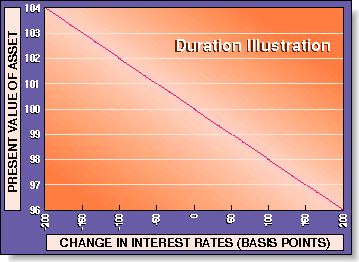
QUANTITATIVE ANALYSIS
A Duration Proxy For Stock Portfolios
by George R. Arrington, Ph.D.
Duration, used in fixed-income portfolios to measure risk associated with changes in interest rates, is applied here to measure the risk of a stock portfolio.
The duration statistic has proved to be a valuable risk indicator for fixed-income portfolios. Duration gives an indication of how sensitive a portfolio is to changes in interest rates. A bond portfolio with a five-year duration would be expected to lose 5% of its value if interest rates rise by one percentage point, or gain 5% if interest rates fall by one percentage point. Duration also provides a benchmark for comparing the relative sensitivity of fixed-income portfolios. A portfolio with a duration of 10 years is twice as volatile as a portfolio with a duration of five years. See sidebar, "Calculating duration," on how fixed-income duration is computed; Figure 1 illustrates the concept.
Because extending the concept of duration to stock portfolios is eminently desirable, there have been a number of attempts to do so in the context of dividend/earnings models. These models transform a stock portfolio into a stream of future payments. It then becomes a simple matter to calculate the duration statistic for the payment stream.
It sounds simple -- but this approach has three basic problems. First, future payment streams are unknown; an educated estimate is the best that can be done. Analysts and investors have difficulty developing creditable estimates for next quarter's dividends, much less for those in the far future. Second, there is little agreement about what interest rates to use when discounting the payment streams to present value. And third, changes in interest rates could also affect the payment streams. Increases in interest rates could slow down the economy and thereby reduce a firm's sales, earnings and dividend stream.

Excerpted from an article originally published in the August 1998 issue of Technical Analysis of STOCKS & COMMODITIES magazine. All rights reserved. © Copyright 1998, Technical Analysis, Inc.